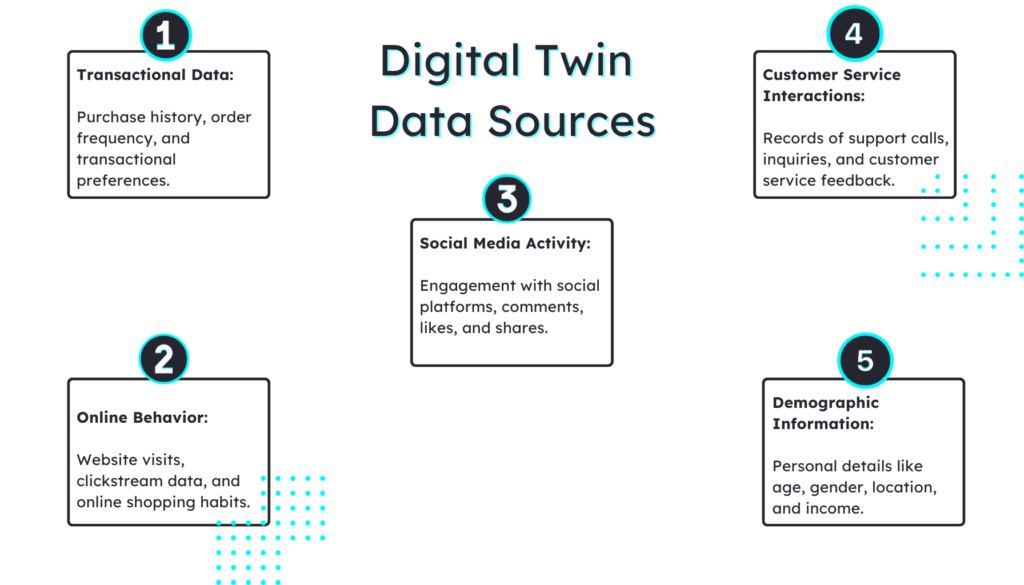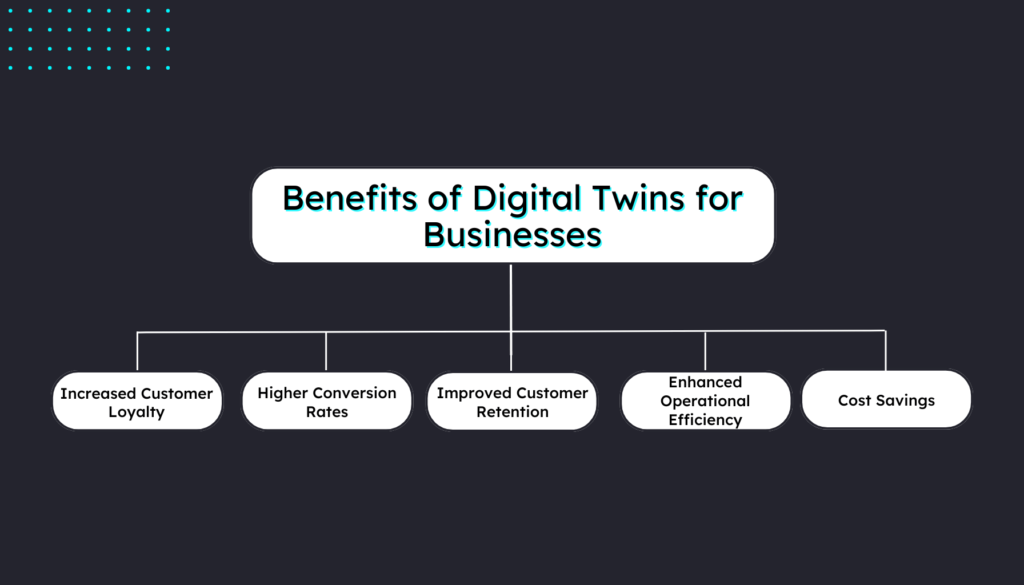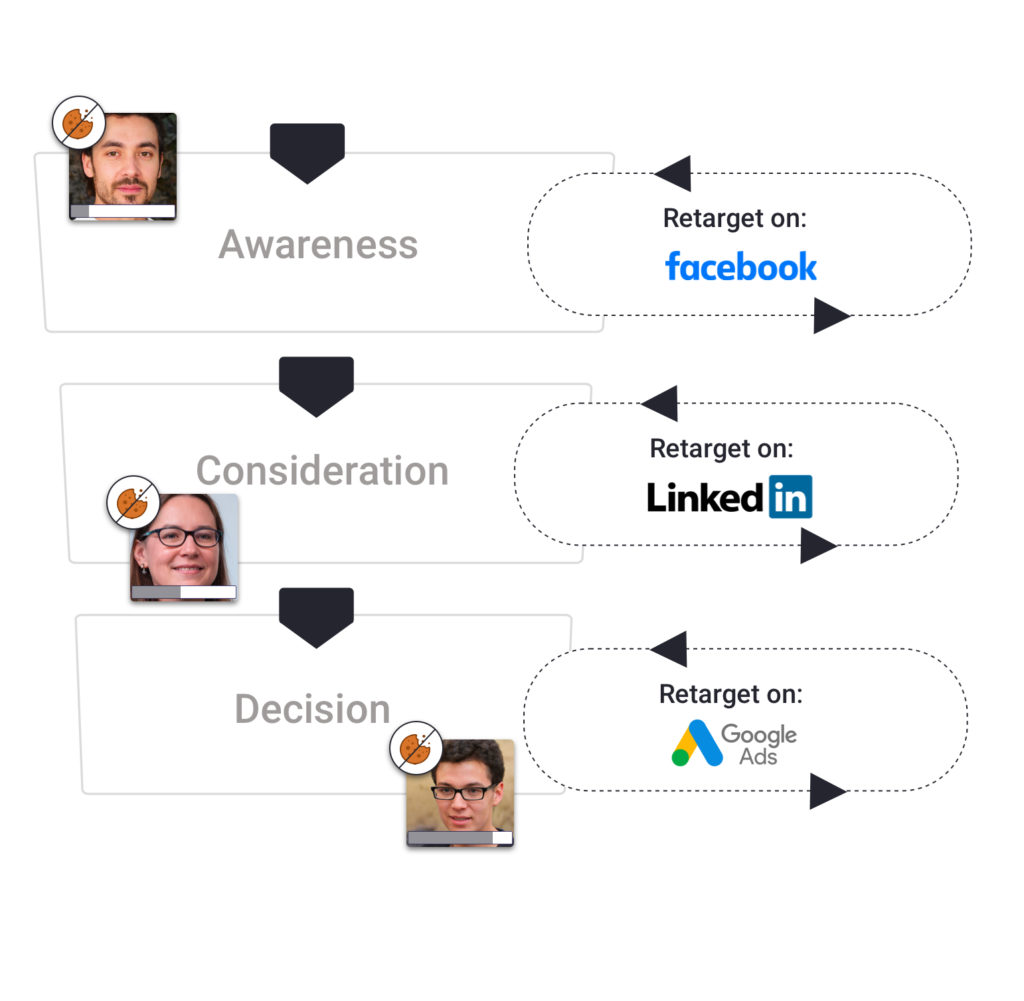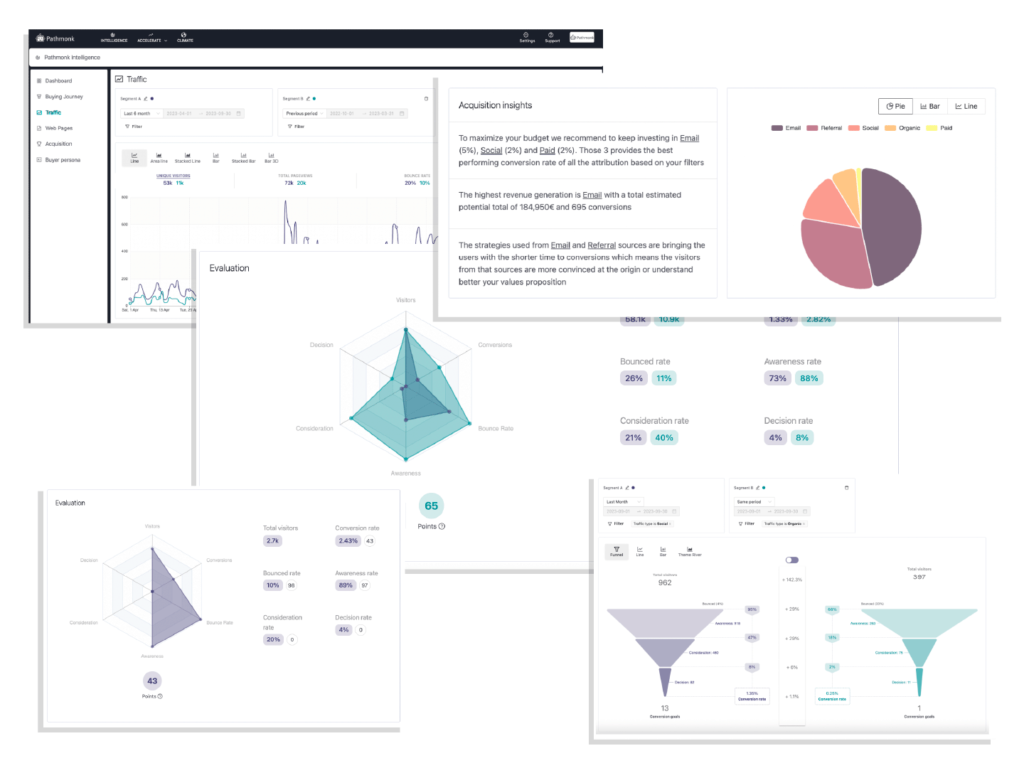Revolutionizing Customer Engagement with a Digital Twin of a Customer


Customer engagement is the connection point where brands and individuals meet, interact, and ideally, form lasting relationships. In a world where customer expectations are continually reshaped by digital innovation and personalization, the question arises: How can businesses keep pace and truly engage with their customers in a way that sets them apart from the competition?
Enter the digital twin of a customer, a concept that promises to revolutionize customer engagement in ways previously thought impossible. This innovative approach is not just a buzzword but a transformative force, offering you a powerful tool to better understand, connect with, and serve your customers on a profoundly individual level.
We’ll delve deep into the realm of the digital twin of a customer, exploring its origins, its dynamic nature, and the pivotal role it plays in today’s customer-centric business world.
Understanding the Digital Twin of a Customer
The concept of digital twins might sound like the stuff of science fiction, but its roots trace back to the world of engineering and industrial design. Originally, digital twins were created as virtual representations of physical objects, systems, or processes. These digital replicas served as invaluable tools in the manufacturing and industrial sectors, allowing engineers to simulate and analyze the behavior and performance of complex machinery and systems in a virtual environment. The digital twin of a physical machine, for instance, allowed for predictive maintenance, real-time monitoring, and the fine-tuning of processes, ultimately leading to significant cost savings and operational efficiencies.
But as technology continued to advance and data became more abundant and accessible, the scope of digital twins expanded far beyond the realm of industrial machinery. The idea of creating virtual models found fertile ground in customer-centric applications, giving rise to the concept of the ‘digital twin of a customer.’
In this new context, a digital twin is a dynamic and evolving representation of an individual customer, built upon a wealth of data points. The digital twin of a customer encompasses an extensive array of information, ranging from demographic details and past purchase history to online behavior, communication preferences, and even sentiment analysis from social media interactions. The digital twin fuses data from multiple sources, creating a comprehensive and continuously updated portrait of each customer’s preferences and behavior.
At the heart of this revolution lies technology and data. Advanced analytics, machine learning, and AI algorithms play a pivotal role in constructing and maintaining these digital representations. They not only process vast amounts of data but also predict future behaviors, enabling you to make highly informed, personalized decisions when engaging with your customers.
The shift from traditional, one-size-fits-all approaches to customer engagement to these individualized, data-driven strategies has been monumental. It’s a shift that promises not only to enhance customer experiences but also to drive business success.

How to Create a Digital Twin of a Customer
The digital twin of a customer is a multifaceted construct, designed to capture the essence of an individual’s interactions, preferences, and behaviors in a comprehensive and actionable manner. Understanding its composition and the process behind its creation and maintenance is pivotal to realizing its potential in customer engagement.
At its core, a digital twin of a customer relies on an extensive array of data sources. These include:
- Transactional Data: Purchase history, order frequency, and transactional preferences.
- Online Behavior: Website visits, clickstream data, and online shopping habits.
- Social Media Activity: Engagement with social platforms, comments, likes, and shares.
- Customer Service Interactions: Records of support calls, inquiries, and customer service feedback.
- Demographic Information: Personal details like age, gender, location, and income.
Attributes within a digital twin encompass not just static information but also dynamic elements that change over time. These attributes include customer preferences, product interests, communication channel preferences, and even sentiment analysis based on textual data.
Creation and Maintenance
Building a digital twin of a customer is a sophisticated process that relies on advanced data analytics and machine learning techniques. It starts by aggregating data from various sources into a centralized repository, where it’s cleaned, processed, and transformed into a cohesive customer profile.
Machine learning algorithms analyze this data to identify patterns and trends in a customer’s behavior, preferences, and interactions. These algorithms continuously update the digital twin as new data is collected.
The maintenance process is ongoing, ensuring that the digital twin remains up-to-date and accurate. Any new data, such as recent purchases, social media interactions, or customer service inquiries, are seamlessly integrated into the customer’s digital twin.
Real-Time and Dynamic Nature
A defining feature of digital twins of customers is their real-time and dynamic nature. They reflect a customer’s current state, not just a historical snapshot. Changes in behavior or preferences are promptly incorporated into the digital twin, ensuring its relevance.
This dynamism empowers you to adapt your strategies in response to evolving customer needs and preferences, enhancing the overall customer experience. For instance, if a customer suddenly shows an interest in a particular product category, the digital twin can trigger personalized recommendations in real time, thus capitalizing on the new interest.
In the world of customer engagement, the digital twin of a customer is more than a static representation; it’s a living, evolving model that enables you to stay connected with your customers in the most relevant and timely manner.
The Impact on Customer Engagement
The digital age has given rise to empowered customers who expect more than just products or services. The shift from traditional, mass marketing approaches to individualized, data-driven strategies has revolutionized how you can connect with your customers. They seek meaningful experiences, relevant content, and personalized interactions.
Businesses have transitioned from generic, one-size-fits-all marketing to engaging customers on a highly personalized level. This shift reflects the changing customer landscape, where individuals increasingly value personalized recommendations, tailored offers, and a deep sense of understanding from the brands they interact with.
Highly Personalized and Targeted Marketing:
Digital twins of customers form the basis of personalized marketing strategies. These digital representations allow you to:
- Analyze historical data to identify patterns and preferences unique to each customer.
- Develop tailored marketing campaigns that resonate with an individual’s interests.
- Send timely, targeted offers and product recommendations.
This personalization results in higher engagement rates, increased conversion rates, and more satisfied customers, ultimately driving business growth.
Improvement in Customer Service Through Better Understanding:
Beyond marketing, digital twins also transform the customer service landscape. When you truly understand your customers, you can provide superior support:
- Customer service agents have access to comprehensive customer profiles, enabling them to address issues more effectively.
- Automated chatbots and virtual assistants can respond to customer inquiries with greater accuracy and empathy.
- Companies can anticipate and proactively address customer needs and pain points, enhancing the overall customer experience.
A better understanding of customer needs and behaviors empowers you to build trust and loyalty, turning occasional buyers into dedicated advocates.

Benefits of Digital Twins for Businesses
Digital twins of customers are more than just a novel concept; they are a strategic advantage if you’re seeking to elevate your customer engagement efforts. These are some of the numerous benefits that digital twins offer, as well as real-life examples of companies that have harnessed this technology successfully.
1. Increased Customer Loyalty:
Through highly personalized marketing and tailored interactions, digital twins foster stronger emotional connections with customers. When customers feel understood and appreciated, they are more likely to remain loyal to a brand.
Amazon’s recommendation system, powered by customer digital twins, has been instrumental in keeping customers engaged and loyal by suggesting products based on their browsing and purchase history.
2. Higher Conversion Rates:
Personalization significantly enhances the likelihood of converting leads into customers. When product recommendations and marketing messages align with a customer’s interests and needs, conversion rates soar.
Netflix’s content recommendation engine, driven by digital twins, has led to higher subscription rates by suggesting TV shows and movies based on a viewer’s watching history and preferences.
3. Improved Customer Retention:
By continuously adapting to changing customer preferences and behaviors, digital twins help you anticipate needs and address issues proactively. This fosters long-term relationships and reduces churn.
Spotify uses digital twins to curate personalized playlists and recommendations, keeping users engaged and reducing the likelihood of switching to competing music services.
4. Enhanced Operational Efficiency:
In addition to customer-facing benefits, digital twins optimize business operations. For instance, predictive maintenance of physical assets is made possible by digital twins, reducing downtime and maintenance costs.
General Electric employs digital twins for their industrial equipment to monitor performance, predict maintenance needs, and improve asset efficiency.
5. Cost Savings:
By precisely targeting marketing efforts and optimizing resources, you can achieve significant cost savings. Allocate marketing budgets more efficiently and reduce expenditures on generic campaigns.
Clothing retailer Stitch Fix uses digital twins to provide personalized fashion recommendations, reducing marketing costs and minimizing the need for excessive inventory.
Challenges and Considerations when Creating Digital Twin of Customers
While the concept of digital twins of customers holds immense promise, it also comes with a set of challenges and ethical considerations, particularly in the areas of privacy and data security. To harness the benefits of digital twins responsibly, you need to navigate these concerns thoughtfully and ensure transparency and compliance with data protection regulations.
Privacy and Data Security Concerns:
The creation and maintenance of digital twins involve the collection and storage of extensive personal data, raising valid concerns about privacy and data security.
Protect customer data from breaches, unauthorized access, and misuse. Safeguarding customer trust is paramount, and any breach can result in significant damage to a brand’s reputation.
Transparency and Consent:
Customers should be informed about the collection and use of their data to create digital twins. Transparency builds trust and ensures that customers are aware of how their information is being used.
Obtaining clear and informed consent from customers is crucial. They should have the option to opt in or out of data collection and digital twin creation.
Compliance with Data Protection Regulations:
Different regions and countries have their own data protection regulations, such as GDPR in Europe, HIPAA in the United States for healthcare, and CCPA for California residents. You must ensure you comply with these laws to avoid legal ramifications.
Non-compliance can lead to hefty fines, legal actions, and reputational damage.
Data Minimization:
Adopt a principle of data minimization, collecting only the data necessary for creating digital twins and no more. Storing excessive data increases security risks and privacy concerns, which is why cookieless technologies are becoming increasingly popular.
Navigating these challenges requires a proactive approach that prioritizes the privacy and security of customer data. It’s essential to implement robust data protection measures, establish transparent data practices, and remain compliant with relevant regulations. By doing so, you can enjoy the benefits of digital twins while building and maintaining trust with your customers.
Supercharge your ads' ROI without cookies
Boost your ads performance with cookie-free ads that retargets users based on their real-time intent.

Creating Digital Twins with Pathmonk Intelligence
Pathmonk Intelligence offers a robust set of features that make it an excellent choice for building digital twins of customers. Here’s how you can leverage its capabilities:
- Seamless Installation:
The first step in creating digital twins is integrating Pathmonk Intelligence into your website. This is a quick and straightforward process, which doesn’t require coding or technical expertise. Within seconds, your system will commence compiling user behavior data, laying the foundation for the digital twin.
Intuitive Cookieless Analytics for Your Web
Understand your customer journey, find drop-offs, and receive actionable insights with AI.

- Real-Time Data Collection:
Pathmonk Intelligence excels at real-time data analysis without relying on cookies. It continuously monitors and analyzes user interactions with your website, ensuring data accuracy and privacy compliance. This real-time data forms the basis for creating dynamic digital twins.
- AI-Driven Insights:
The heart of Pathmonk Intelligence lies in its cutting-edge artificial intelligence algorithms. These algorithms process data from various marketing channels and distill it into actionable insights. By leveraging these insights, you can develop highly personalized digital twins that drive conversions and optimize marketing strategies.
- Centralized Data Hub:
Pathmonk Intelligence serves as a single source of truth for data collection and analysis. It aggregates data from various sources, offering a centralized platform for comprehensive conversion funnel analysis. This simplifies the creation of digital twins by providing a holistic view of customer interactions.
- Privacy Compliance:
Pathmonk Intelligence’s standout feature is its ability to operate without cookies, ensuring privacy compliance. By respecting stringent privacy regulations, you can create digital twins that protect user data while delivering personalized experiences.
Conclusion
Digital twins of customers are not mere snapshots of past interactions; they are dynamic, evolving representations that capture the essence of each customer. With technology, data, and AI-driven insights at their core, these digital twins empower you to create deeply personalized and highly targeted engagement strategies.
The future of customer engagement lies in the ability to understand and engage with customers on a highly personalized level, fostering deeper connections and driving conversions. Digital twins of customers, with the help of tools like Pathmonk Intelligence, are at the forefront of this customer revolution. They promise to deliver experiences that are not just customer-centric but customer-driven, and the results are sure to be nothing short of revolutionary. As you continue to embrace this innovation, the path to success in customer engagement becomes clearer and more exciting than ever before.





